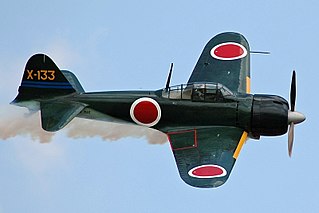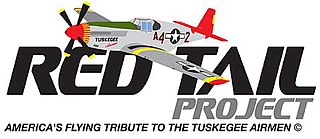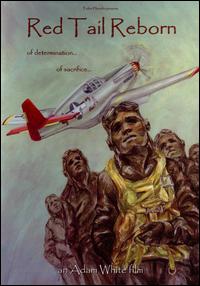
The Mitsubishi A6M "Zero" is a long-range carrier-based fighter aircraft formerly manufactured by Mitsubishi Aircraft Company, a part of Mitsubishi Heavy Industries. It was operated by the Imperial Japanese Navy (IJN) from 1940 to 1945. The A6M was designated as the Mitsubishi Navy Type 0 carrier fighter, or the Mitsubishi A6M Rei-sen. The A6M was usually referred to by its pilots as the Reisen, "0" being the last digit of the imperial year 2600 (1940) when it entered service with the Imperial Navy. The official Allied reporting name was "Zeke", although the name "Zero" was used colloquially as well.

A warbird is any vintage military aircraft now operated by civilian organizations and individuals, or in some instances, by historic arms of military forces, such as the Battle of Britain Memorial Flight, the RAAF Museum Historic Flight, or the South African Air Force Museum Historic Flight.

Planes of Fame Air Museum is an aviation museum at Chino Airport in Chino, California.
Stephen Low is a Canadian film director and screenwriter who works extensively in the IMAX and IMAX 3D film formats. Based in Montreal, Quebec, over his 30-plus year career Low has directed numerous award-winning film documentaries including Challenger: An Industrial Romance (1980), Beavers (1988), Titanica (1991), Super Speedway (1997), Volcanoes of the Deep Sea (2003), Fighter Pilot: Operation Red Flag (2004), Ultimate Wave Tahiti 3D (2010), Legends of Flight 3D (2010), Rescue 3D (2011), Rocky Mountain Express (2011) and Aircraft Carrier (2017).

Blake is a 1969 Canadian short documentary film produced by the National Film Board of Canada (NFB). The film was directed by Bill Mason, and his fellow filmmaker Blake James, who pilots his own aircraft and lives by a unique code. Blake is Mason's cinematic testimonial to his friend and his "hobo of the skies" lifestyle.

The Red Tail Squadron, part of the non-profit Commemorative Air Force (CAF), known as the Red Tail Project until June 2011, maintains and flies a World War II era North American P-51C Mustang. The twice-restored aircraft flies to create interest in the history and accomplishments of the members of the World War II-era 332nd Fighter Group, also known as the Tuskegee Airmen, whose distinctive red markings on the tails of the P-51s they flew during that war, gave the organization its name.

Red Tail Reborn is a 2007 historical documentary film by Adam White about the Commemorative Air Force's Red Tail Project. The project involves the restoration, exhibition and maintenance of a World War II P-51 Mustang flown by the United States Air Force 332d Fighter Group. The exhibition of this plane is considered to be a traveling and flying tribute to the Tuskegee Airmen. In addition to increasing awareness of the travails of the Tuskegee Airmen, this film served to highlight the Red Tail Project fundraising effort to rebuild the plane after a 2004 crash.
On the Spot was the first television series made specifically for TV by the National Film Board of Canada, and aired on CBC Television from 1953 to 1955. Each episode reported on a different aspect of life in Canada and was introduced with the line "The National Film Board’s up-to-the-minute report of what’s happening somewhere in Canada”. The series was originated by Bernard Devlin, with Robert Anderson as executive producer.

FIFI is a Boeing B-29 Superfortress. It is one of two B-29s in the world flying as of 2024. It is owned by the Commemorative Air Force and is based at the Victor N. Agather Hangar at Dallas Executive Airport in Dallas, Texas.

The Military Aviation Museum is located in Virginia Beach, Virginia, and houses one of the world's largest private collections of warbirds in flying condition. It includes examples from Germany, France, Italy, Russia, the United Kingdom, and the United States, from both World War I and World War II. The collection contains aircraft ranging from the 1910s to the early 1950s.

Wasp Wings is a 42-minute 1945 Canadian documentary film made by the Royal Canadian Air Force (RCAF) Overseas Film Unit and the National Film Board of Canada (NFB). The film takes its name from the colourful markings known as invasion stripes that were painted on Supermarine Spitfire fighter aircraft on D-Day, making them look like "angry wasps".

Flight 6 is a 1944 Canadian documentary film produced by the National Film Board of Canada and directed and primarily photographed by Sydney Newman. The film is part of the Canada Carries On series, which ran from 1940 to 1959. Newman was also the executive producer for the series. Many of the documentaries were created as morale boosting propaganda films during the Second World War.

Global Air Routes is a 14-minute 1944 Canadian documentary film produced by the National Film Board of Canada, directed and edited by Stuart Legg. The film is part of The World in Action series. Legg directed a number of documentaries for both The World in Action and earlier Canada Carries On series. Many of the documentaries were created as morale-boosting propaganda films during the Second World War.

Transpacific Flight is a 1953 Canadian short documentary film, part of the On The Spot series made specifically for television, produced by the National Film Board of Canada (NFB). The documentary involved an account of a flight across the Pacific Ocean in 1953, based on first-person interviews of the flight crew.

The Aviators of Hudson Strait is a 1973 Canadian short documentary film produced by the National Film Board of Canada (NFB) for the Canadian Department of National Defence.

Challenger: An Industrial Romance is a 1980 Canadian documentary film, produced by the National Film Board of Canada (NFB). The documentary follows the development of Canadair's Challenger, a business jet airliner.
Kawaguchiko Motor Museum / Fighter Museum is a museum located in Yamanashi prefecture, Japan. Founded in 1981 by former race driver and businessman Nobuo Harada, it has a collection of antique motor vehicles. In 2001 it opened a new area to display a collection of 20th century military aircraft used by Japan, from Japanese Imperial Forces during World War II and the Japan Self-Defense Forces in the postwar period.















